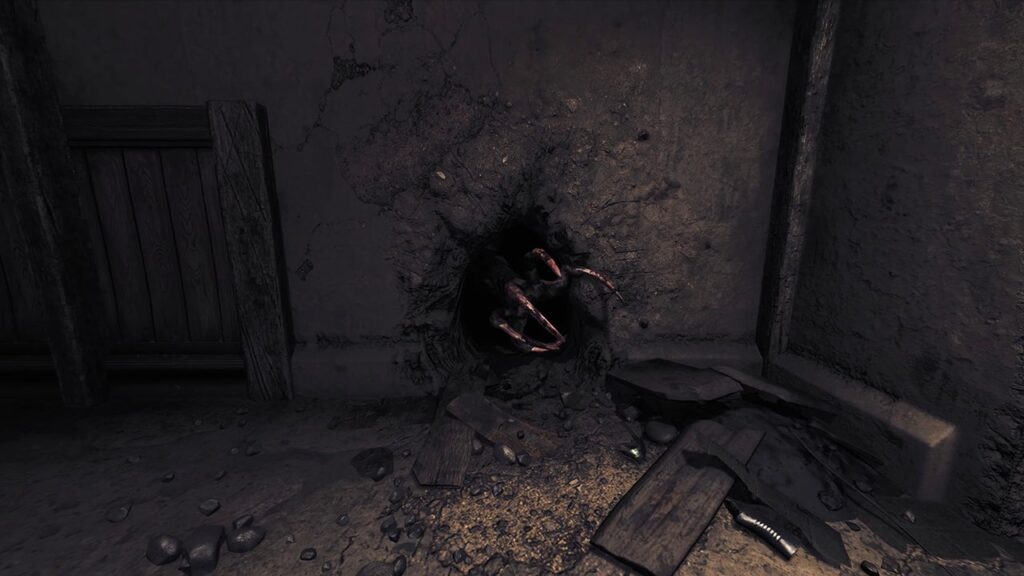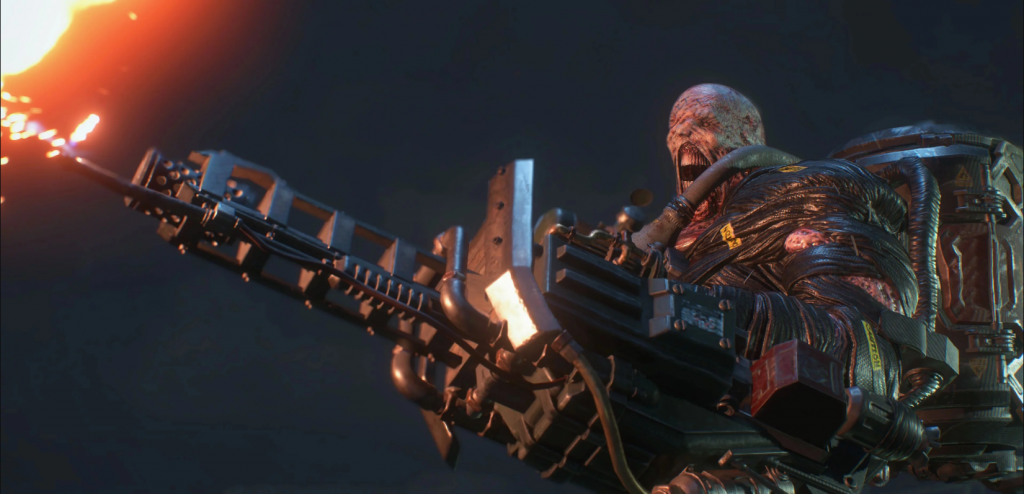The Silent Hill 2 remake is in the news following the Sony state of play, and while people are either gushing over details about the world, yelling about character redesigns, or just ignoring it and playing Resident Evil 4, something caught my eye that I don’t see more people discussing. Combat, or specifically, engaging with enemies has been given a redesign to bring it up to the standards of, once again, Resident Evil 4, however, this clashes with the act of survival horror and gives us the easiest distinction between action and survival horror design.
Power vs. Powerless
I’ve talked a lot about the power fantasy distinction in horror and action design in my book on the genre and previous posts. Depiction and intent are important aspects to comprehend if you’re designing a horror game. Some people will say that any game that features “monsters” is supposed to be scary, but we know that’s not the case. Doom Eternal has monsters…demons actually, but the player is not supposed to be scared.
What Resident Evil 4, both the original and remake, brought to the table was a rethinking of what you could do in a horror setting. Leon in both versions is very capable — he can headshot, he can perform wrestling moves, he can counter almost anything with his knife. So while the player is in a spooky area, fighting spooky people, the game is not meant to be scary. The player is in, or should be in, control of any situation.
With the Silent Hill 2 remaster, several things I noticed that gave me pause during the trailer was a greater focus on i-frame dodging, James’s ability to stun an enemy before going in for a finishing blow like Leon, and in the extended trailer watching a nurse auto counter James after attacking too much.

good horror has to strike balance between giving the player power and making them helpless (source IGN)
It’s easy to think that improving the combat, or creating new combat mechanics, is going to make the game better, but it also clashes with one of the most essential tenets of good horror design — you DON’T want to be fighting.
Overcorrecting Horror
Two over corrections happened with horror design in the 2010’s. Following the success of Resident Evil 4 in the prior decade, designers started to really push the idea of combat as a focus for horror such as in Dead Space and the later Evils. Even F.E.A.R. which is still highly regarded went for this idea of a military shooter meets Japanese horror.
The other was a complete denouncement of the prior trend by smaller and indie studios. One of the most famous for that time was Frictional Games, who after the release of the Penumbra series went on to hit it big with Amnesia: The Dark Descent. In interviews after the fact, the co-founder often said they wanted to move away from combat/fighting in horror games as it was hurting the experience. Soon after, every single indie developer went a similar route with the likes of FNAF, Outlast, and more horror games than I can count today.
Some may put combat in as kind of a boss fight or end-game option, but for most of the gameplay, the player is not fighting or engaging with the enemies in any way. Looking back on both styles, the developers are wrong for different reasons. With the action side, the more the player is allowed to engage with enemies from a position of power, the less horror there is. You know a game is not meant to be scary, such as in Dead Space, where most of the encounters are arena fights that put the combat front and center. With The Callisto Protocol, I said in my review that it was a good action game, but a terrible horror game for how combat devolved into a dodging mini-game.

Resident Evil 4 wants to have it both ways in terms of survival and action, but still leans more on being powerful than powerless (source author)
From the other side of the equation, having no combat or direct interaction with the enemies presents a different problem. It creates this black-or-white state that the player is either 100% safe or 100% dead. When the player knows that there is nothing else they can reasonably do, the sense of horror is replaced with a sense of frustration getting stuck at a spot repeatedly.
From a gameplay standpoint, it makes these horror games become exceptionally repetitive because there is only one “right way” to get through these encounters. If you watch high-level play of something like FNAF or Outlast, you’re not engaging with the game anymore, you are performing a fixed set of actions designed to counter the AI behavior of the enemy, not the enemy itself. In the past, I’ve equated horror like this to a haunted house, and in my opinion, that’s not good horror design.
With the footage I saw from Silent Hill Remaster, the developers are obviously leaning towards the former, but this betrays several aspects of survival horror design that I don’t see a lot of developers doing justice to.
Scrapping By:
Survival horror, as the name implies, is about “survival”. This is not supposed to be about the Doom Slayer ripping and tearing through monsters, just as it isn’t about someone being chased by cannibalistic monsters and deciding not to pick up any of the knives, swords, clubs, or chainsaws they find around.
There is a very narrow place for where combat should fall in a survival horror game. It is meant to be a tool, but not “the tool” the player can use. If combat is too powerful, then it becomes the best option in any encounter if the player can just fight their way passed everything. If it’s too weak or nonexistent, then the player doesn’t have a way of interacting with the creatures. A good example of this philosophy would be the survival items from Resident Evil 1 Remaster, they allow the player to fight enemies a bit more safely than before, but they are still limited in their use.
What you want to see in a good horror setting is that fighting is allowed, but you do not want to be doing it. There needs to be a credible risk to fighting enemies to the player’s health, resources, or both. The horror in these games is a form of the same horror seen in every soulslike where the player is in uncharted territory with a ton of souls — that risk that in any fight or situation, they could lose everything. Combat needs to be messy and chaotic, not something that you can hone your skills at like in Sekiro where there is a legitimate challenge to get through the game, and games like it, hitless.
That also means designing enemies whose only behavior isn’t either “run at the player” or “run very fast at the player.” Nemesis and Mr. X from Resident Evil 2 and 3 remakes are close to what I’m looking for, but they still feel more like a phase in the level design, rather than an active enemy. Once you know their behavior, they stop being a threat. Looking at the footage from the Silent Hill 2 Remake trailer, the nurse was performing the same three-hit combo twice, which leads me to believe that combat is going to be mechanical in that respect.

The problem with Nemesis and Mr.X is that they still fall into set patterns for engagement (source Capcom)
In a surprising twist, the closest a game has gotten to what I’m looking for in survival horror would be Amnesia: The Bunker. The beast that stalks the player is something that can be engaged with in multiple organic ways — you can set traps, use noise as bait, or just shoot the damn thing until it retreats. Being able to fight the creature or use the environment to your advantage gives the player a lot of options, and takes me to what I want to see as an evolution of horror.
Immsurvival
What I’m looking for as an evolution of horror design is not about making the game hard to control or have janky movement, but giving the player a variety of weapons and means of survival, and making them completely terrified to use any of them against whatever “thing” is coming after them. Returning to the idea of Doom and push-forward combat, I had a crazy idea — can you make a survival horror game where the player has infinite healing items and ammo by default, but still make it frightening to play?
I want the enemy designs to have as much freedom to use the environment as they see fit that the player does — the trapper becoming the trappie to then turn it around on the player. I’m tired of games that only have fixed breakable sections where an enemy can show up — I want the player to feel like 360 degrees around them is unsafe at all times.
Good horror design is about making the player fight themselves as much as they are fighting enemies and making the player too powerful or too weak ends up with a horror game with either too much or too little bite to it.
For more about horror design, you can check out my Deep Dive on it.
If you would like to support what I do and let me do more daily streaming, be sure to check out my patreon. My discord is now open to everyone for chatting about games and game design.

